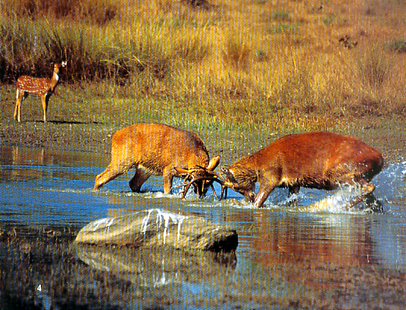Predator-Prey Relationships
The pygmy hog is one of the many animals found in Manas National Park. The species is actually now limited to the park, and is critically endangered. If this species would go extinct, the many insects that it feeds on would get the chance to become overpopulated, which could destroy the vegetation in the area. Meanwhile, if the insects were the ones to decline in number, the pygmy hog would not have enough food to sustain themselves by and become extinct, because they are so close to extinction already.
Manas National Park also contains the Manas Tiger Reserve, home to endangered tigers. These tigers will eat many kinds of animals, but one of their main kinds of prey is the Indian antelope. If these antelope would ever relocate or lessen in numbers, the tigers, like what happened with the pygmy hogs, could possibly starve and start dying off. Meanwhile, if the tigers ever became extinct, the antelope would become overpopulated and wipe out the vegetation, possibly their species, and possibly other species would need that vegetation to survive.
Manas National Park also contains the Manas Tiger Reserve, home to endangered tigers. These tigers will eat many kinds of animals, but one of their main kinds of prey is the Indian antelope. If these antelope would ever relocate or lessen in numbers, the tigers, like what happened with the pygmy hogs, could possibly starve and start dying off. Meanwhile, if the tigers ever became extinct, the antelope would become overpopulated and wipe out the vegetation, possibly their species, and possibly other species would need that vegetation to survive.
The Role of Predation
Predation is one of nature's ways of keeping prey populations under control. One example stems from the relationship between the Indian Palm Squirrel and Asian Palm Civet. There could be many Indian Palm Squirrels within the ecosystem, but the Asian Palm Civet eats them to keep their numbers under sustainable conditions. The same type of relationship goes with the Yellow-Bellied Weasel and the Leopard. Although they are both Secondary Consumers, the weasel population is kept under control by the leopard population.

